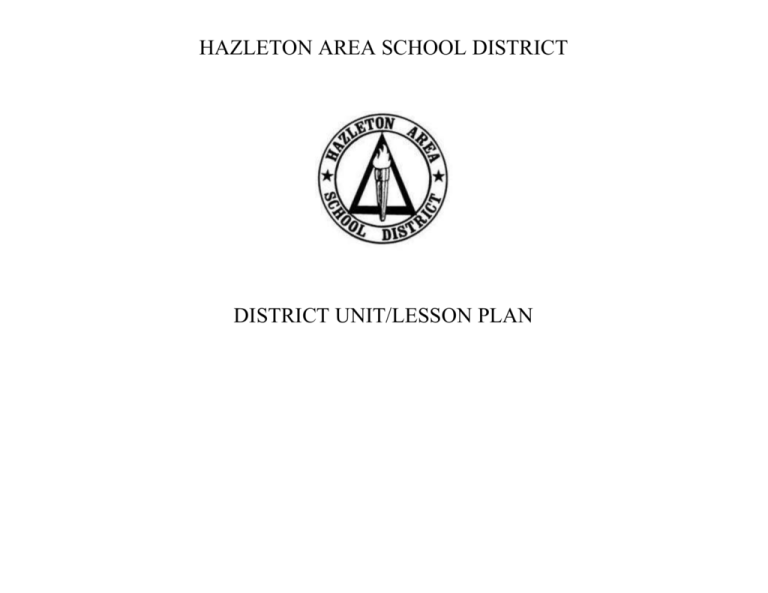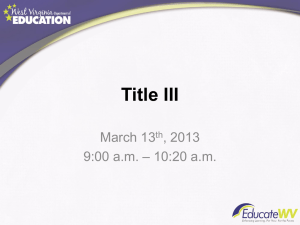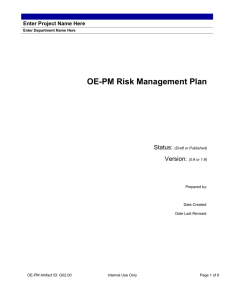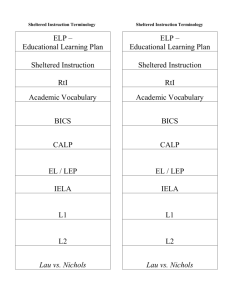MWH1 Topic2 - Hazleton Area School District
advertisement

HAZLETON AREA SCHOOL DISTRICT DISTRICT UNIT/LESSON PLAN Teacher Name : Melissa Stauffer Subject : Civics Start Date(s): 9/3/15 Grade Level (s): 7 Building : DEMS Unit Plan Unit Title:. Topic 2 Essential Questions: Why do people move? Standards: PA Core Standards, PA Academic Standards/Anchors (based on subject) CC. 1.2.8.A- determine central idea of a text and analyze its development over the course of the text, including the relationship to supporting ideas: provide objective summary of the text. CC.8.5.6-8.B: Determine the central ideas or information of a primary or secondary source; provide an accurate summary of the source distinct from prior knowledge or opinions. CC.8.5.6-8.D: Determine the meaning of words and phrases as they are used in a text, including vocabulary specific to domains related to history/social studies. CC.8.6.6-8.C: Produce clear and coherent writing in which the development, organization, and style are appropriate to task, purpose, and audience. CC.8.6.6 Use technology, including the Internet, to produce and publish writing and present the relationships between information and ideas clearly and efficiently. 5.1.8.B: Outline how different systems of government function. 7.1.8.B: Explain and locate places and regions as defined by physical and human features. 6.2.8.E: Compare the state of the current economy with the economy in a different time or place. 8.1.8.B: Compare and contrast a historical event, using multiple points of view from primary and secondary sources. 8.4.8.A: Compare the role groups and individuals played in the social, political, cultural, and economic development throughout world history. ELP.5.W.6-8.1.1: Label pictures of historical events. ELP.5.W.6-8.2.1: Write phrases and short sentences about historical events using graphic organizers ELP.5.W.6-8.3.1: Compare and/or contrast historical events using graphic organizers. ELP.5.W.6-8.4.1: Generate a written summary of historical events using graphic organizers. ELP.5.W.6-8.5.1: Author an essay about a historical event using graphic organizers. ELP.5.L.6-8.5.1: Construct a representation of different types of maps from oral descriptions. ELP.5.R.6-8.2.1: Classify data based on information from text and charts using a graphic organizer. ELP.5.R.6-8.3.1: Compare data based on information from text and charts using a graphic organizer. ELP.5.R.6-8.4.1: Analyze data based on information and charts in small groups. ELP.5.R.6-8.5.1: Predict future trends based on data gleaned from grade-level text and charts within a small groups Summative Unit Assessment : Summative Assessment Objective Students willDemonstrate proficiency on all work. Assessment Method (check one) __X__ Rubric ___ Checklist __ Unit Test ____ Group __X__ Student Self-Assessment ___ Other (explain) Proficiency will be demonstrated through quizzes, discussions, group activities, independent work, web quest, and chapter test. Day Objective (s) DOK LEVEL Activities / Teaching Strategies Grouping DAILY PLAN Materials / Resources Assessment of Objective (s) Age of Ideas Timeline Topic First 20 days Renaissance Objective Reformation Students will be able to explain how political and economic conditions in Europe contributed to the birth of the Renaissance. Students will be able to identify the major artistic, literary, and technological contributions of individuals during the Renaissance. Students will investigate how geography played a role in the diffusion of the ideas from one country to another in Europe. Students will investigate the causes and outcomes of the Reformation. Essential Questions Do you think the age of modern technology can be considered a second Renaissance? PA Standards/PA Core Standards CC.1.2.8.A Determine a central idea of a text and analyze its development over the course of the text, including its relationship to supporting ideas; provide an objective summary of the text 8.4.8.A: Compare the role groups and individuals played in the social, political, cultural, and economic development throughout world history. 8.4.8.B: Illustrate how historical documents, artifacts, and sites are critical to world history. 8.4.8.C: Illustrate how continuity and change have impacted world history. Belief systems and religions Commerce and industry Technology Politics and government Physical/human geography Social organizations 8.4.8.D: Compare conflict and cooperation among groups and organizations which have impacted the history and development of the world. PA ELL Standards ELP.5.L.6-8.1.1: Locate places or geographic features on a map from oral commands. ELP.5.L.6-8.2.1: Select appropriate maps to identify regions, countries or landforms from oral statements. ELP.5.L.6-8.3.1: Select appropriate maps based on oral descriptions about regions, countries, landforms or highways. ELP.5.L.6-8.4.1: Compare and contrast different types of maps from oral descriptions. ELP.5.L.6-8.5.1: Construct a representation of different types of maps from oral descriptions. ELP.5.S.6-8.1.1: Name historical figures in photographs and illustrations. ELP.5.S.6-8.1.1: Name historical figures in photographs and illustrations. ELP.5.S.6-8.3.1: Role-play scenes from the lives of historical figures from photographs, illustrations or videos. ELP.5.S.6-8.4.1: Offer alternatives to the actions of historical figures based on multimedia. ELP.5.S.6-8.5.1: Debate or defend a decision or action of a historical figure in teams. ELP.5.W.6-8.1.1: Label pictures of historical events. ELP.5.W.6-8.2.1: Write phrases and short sentences about historical events using graphic organizers ELP.5.W.6-8.3.1: Compare and/or contrast historical events using graphic organizers. ELP.5.W.6-8.4.1: Generate a written summary of historical events using graphic organizers. ELP.5.W.6-8.5.1: Author an essay about a historical event using graphic organizers. HAZLETON AREA SCHOOL DISTRICT Social Studies Curriculum Grade 7 Academic Vocabulary Printing Press Humanism Scientific Method Vernacular Cultural Diffusion Protestant Catholic Monarchy Despotism Sovereign Divine Right Balance of Power Oligarchy Autocratic Social Contract Philosopher Laissez-faire Natural Rights Suggested Materials/Resource Textbook Various Maps (Physical and Political) Graphic organizers Student created foldable Projector/overhead Blank Timeline Internet access Student computer access The Louvre Virtual tours website: http://www.louvre. Primary Sources from the Luminarium; Anthology of English Literature http://www.luminarium.or La Renaissance http://www.ibiblio.org/wm/p /glo/renaissance/ Teaching transparency www.historychannel.com www.nationalgeographic.co www.Smithsonianeducation www.metmuseum.org Age of Ideas Timeline 20 days Topic Absolutism Enlightenment Objective Students will be able to describe the events that led to the development of absolute monarchies in Europe. Students will explain how the main ideas of the Enlightenment can be traced back to the Renaissance, Reformation, and the Scientific Revolution. Students will compare and contrast the political, economic, and cultural ideas that emerged during the Enlightenment and how they spread throughout Europe. Essential Questions Can society truly create a just government? PA Standards/PA Core Standards CC.1.2.8.A Determine a central idea of a text and analyze its development over the course of the text, including its relationship to supporting ideas; provide an objective summary of the text. CC.8.6.6-8.A. Write arguments focused on discipline-specific content. 5.1.8.B: Outline how different systems of government function. 7.1.8.B: Explain and locate places and regions as defined by physical and human features. 6.2.8.E: Compare the state of the current economy with the economy in a different time or place. 8.1.8.B: Compare and contrast a historical event, using multiple points of view from primary and secondary sources. 8.4.8.A: Compare the role groups and individuals played in the social, political, cultural, and economic development throughout world history. PA ELL Standards ELP.5.W.6-8.1.1: Label pictures of historical events. ELP.5.W.6-8.2.1: Write phrases and short sentences about historical events using graphic organizers ELP.5.W.6-8.3.1: Compare and/or contrast historical events using graphic organizers. ELP.5.W.6-8.4.1: Generate a written summary of historical events using graphic organizers. ELP.5.W.6-8.5.1: Author an essay about a historical event using graphic organizers. ELP.5.L.6-8.5.1: Construct a representation of different types of maps from oral descriptions. ELP.5.R.6-8.2.1: Classify data based on information from text and charts using a graphic organizer. ELP.5.R.6-8.3.1: Compare data based on information from text and charts using a graphic organizer. ELP.5.R.6-8.4.1: Analyze data based on information and charts in small groups. ELP.5.R.6-8.5.1: Predict future trends based on data gleaned from grade-level text and charts within a small groups Academic Vocabulary Printing Press Humanism Scientific Method Vernacular Cultural Diffusion Protestant Catholic Monarchy Despotism Sovereign Divine Right Balance of Power Oligarchy Autocratic Social Contract Philosopher Laissez-faire Natural Rights Suggested Materials/Resource See Above







